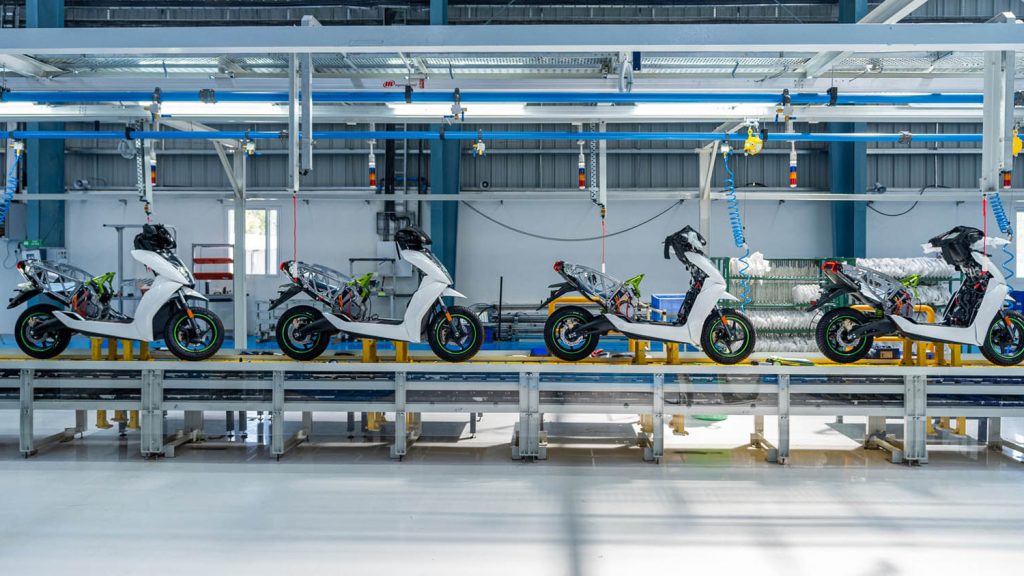Ather Energy, a nimble start-up in the Indian electric vehicle market, is using the Siemens Xcelerator platform to fast-charge new product development and engineering of more sustainable two-wheelers
Over the coming decade, the global electric scooter market is projected to surpass $59 billion, providing an accessible form of transportation to the masses that also benefits from renewable energy.
India is seen as one of the key markets for such products, with a vast population keen to jump on the electric two-wheeler trend. As a result, electric scooters are forecast to make up some 70% of Indian vehicle sales by 2030.
Ather Energy is already a leading brand in the sector, offering a range of eye-catching machines and running a comprehensive charging network. Founded in 2013 by Indian Institute of Technology (IIT) Madras alumni Tarun Mehta and Swapnil Jain, it launched India’s first truly intelligent e-scooter, the Ather 450, back in 2018.
Variants of the 450 have since followed, from the sporty Apex model to the family-focused Rizta. All models benefit from the 1,600-plus charging points across India that make Ather Grid one of India’s largest fast-charging networks. “In the fast-evolving EV industry, speed to market is an important lever to succeed,” says Jain, whose roles at Ather include that of Chief Technology Officer.

Ather Energy originally adopted Siemens Teamcenter software for its PLM capabilities, in order to drive down time to market. According to Jain, this helped reduce the company’s design and engineering cycle times, with the removal of design iterations and the adoption of a ‘right first time’ approach.
Since then, the Ather Energy team has adopted the Siemens Xcelerator portfolio, taking advantage of Simcenter Star-CCM+ software for CFD analysis of bikes and batteries. Simcenter plays a key role in the company’s in-house testing regime for factors including durability and noise, vibration and harshness (NVH).
Most recently, the Ather Energy vehicle engineering team moved to Siemens’ NX, helping it to build CAD models for new product development and engineering and shift away from its legacy system for all existing and new vehicle platforms.
“The simulations and virtual testing we perform using Siemens’ tools enable us to crush timing and provide us with great savings in resources and money spent on repeating testing,” says Jain.
“The stack-up analysis enables us to get a design right the first time and avoid engineering changes. We are looking at expanding the Siemens tools into controlling the manufacturing processes by introducing the management of a Bill of Processes.”
Ather Energy is moving forwards in as nimble a manner as its EV scooters navigate Indian roads. Evidence of its success includes a partnership with Hero MotoCorp, the world’s largest two-wheeler manufacturer, which wishes to benefit from Ather’s fastcharge network.
With further growth yet to come, Ather Energy has built out a product development platform that looks set to provide an ideal launchpad for its bold sustainable transport ambitions.
This article first appeared in DEVELOP3D Magazine
DEVELOP3D is a publication dedicated to product design + development, from concept to manufacture and the technologies behind it all.
To receive the physical publication or digital issue free, as well as exclusive news and offers, subscribe to DEVELOP3D Magazine here






